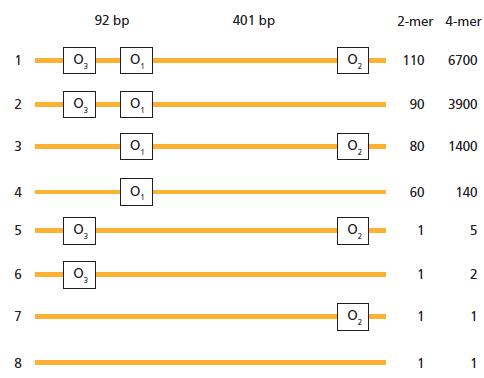Detailed analysis of the regulatory region of the Lac operon has revealed surprising complexity. Instead of a
Question:
Detailed analysis of the regulatory region of the Lac operon has revealed surprising complexity. Instead of a single binding site for the Lac repressor, as might be expected, there are three sites termed operators: O1, O2, and O3, arrayed along the DNA as shown in Figure Q8–7. To probe the functions of these three sites, you make a series of constructs in which various combinations of operator sites are present. You examine their ability to repress expression of β-galactosidase, using either tetrameric (wild type) or dimeric (mutant) forms of the Lac repressor. The dimeric form of the repressor can bind to a single operator (with the same affinity as the tetramer) with each monomer binding to half the site. The tetramer, the form normally expressed in cells, can bind to two sites simultaneously. When you measure repression of β-galactosidase expression, you find the results shown in Figure Q8–7, with higher numbers indicating more effective repression.
A. Which single operator site is the most important for repression? How can you tell?
B. Do combinations of operator sites (Figure Q8–7, constructs 1, 2, 3, and 5) substantially increase repression by the dimeric repressor? Do combinations of operator sites substantially increase repression by the tetrameric repressor? If the two repressors behave differently, offer an explanation for the difference.
C. The wild-type repressor binds O3 very weakly when it is by itself on a segment of DNA. However, if O1 is included on the same segment of DNA, the repressor binds O3 quite well. How can that be?
Figure Q8–7

Step by Step Answer:

Molecular Biology Of The Cell
ISBN: 9780815344322
6th Edition
Authors: Bruce Alberts, Alexander D. Johnson, Julian Lewis, David Morgan, Martin Raff, Keith Roberts, Peter Walter





